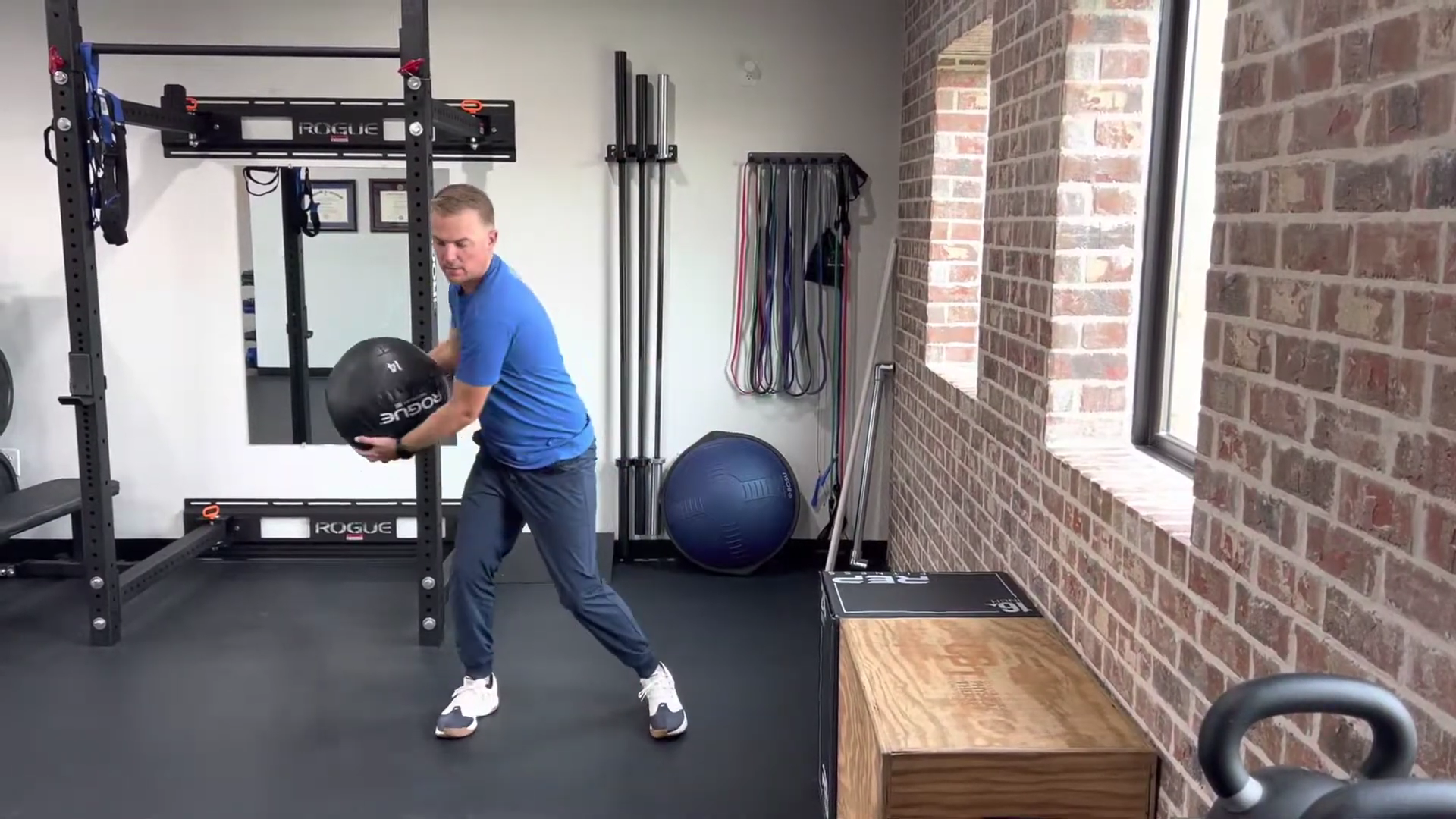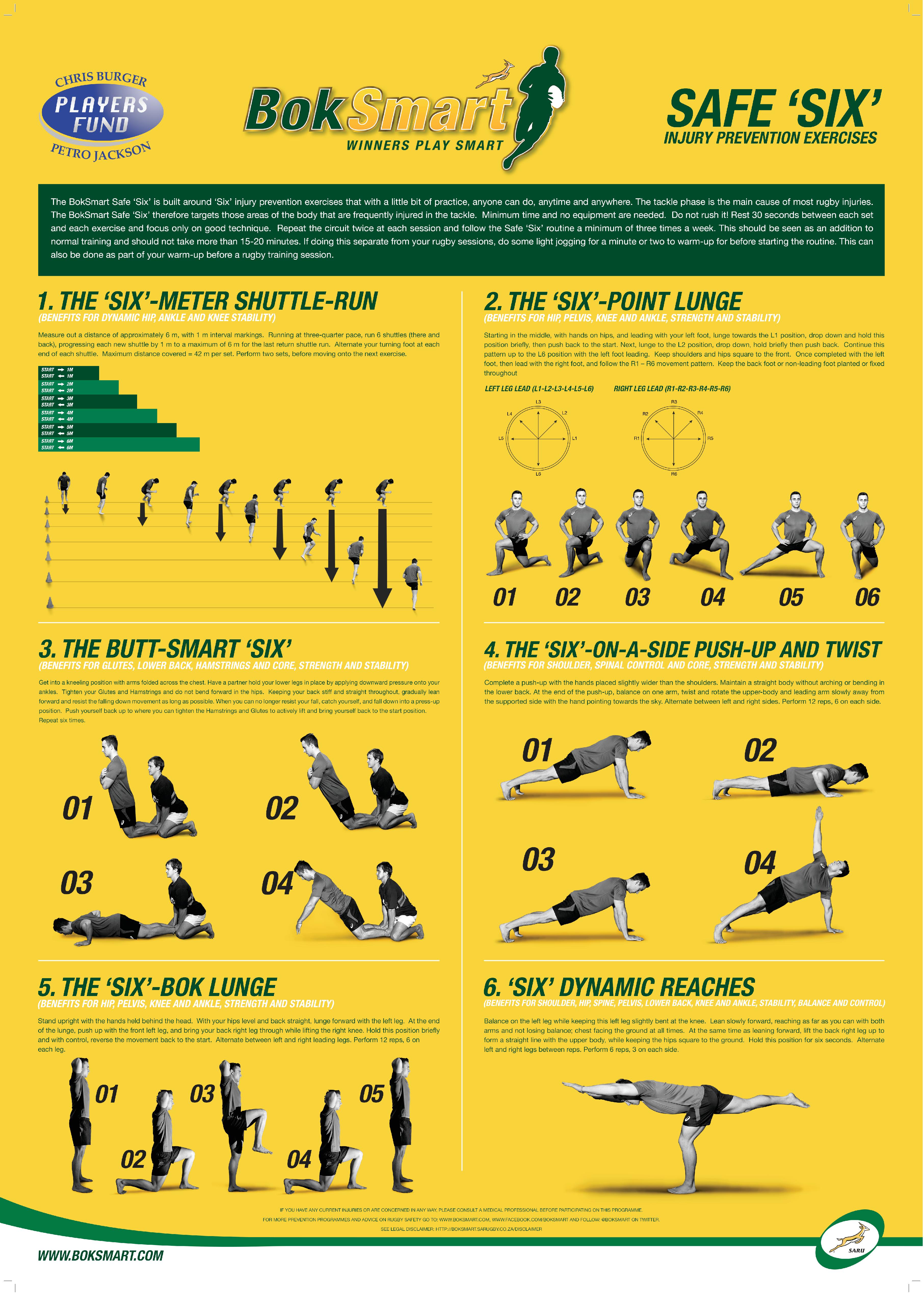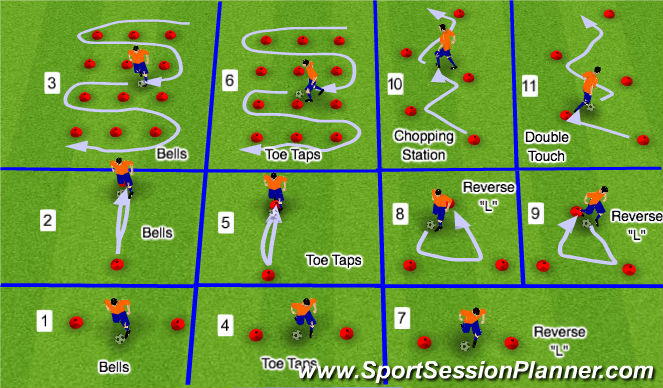
Preventing Rugby Injuries: A Comprehensive Guide to Strength and Conditioning Exercises
Rugby, a physically demanding sport characterized by high-impact collisions and explosive movements, places significant stress on the body. Injuries are an unfortunate reality, but proactive measures can significantly reduce the risk. A robust strength and conditioning program focusing on injury prevention is crucial for every rugby player, from amateur to professional. This program should encompass a multifaceted approach, targeting strength, power, speed, agility, flexibility, and proprioception.
This article provides a detailed overview of key exercises and training principles to minimize the risk of common rugby injuries. We will categorize exercises based on the body parts most susceptible to injury in rugby, providing specific examples and emphasizing proper technique.
I. Lower Body Injuries: Prevention and Exercises
Lower body injuries, including hamstring strains, knee ligament tears (ACL, MCL, LCL), and ankle sprains, are prevalent in rugby. These injuries often stem from rapid acceleration, deceleration, twisting movements, and direct contact.
A. Hamstring Strain Prevention:
Hamstring strains occur due to imbalance between hamstring and quadriceps strength, inadequate flexibility, and fatigue. The following exercises address these vulnerabilities:
- Nordic Hamstring Curls: This exercise is gold-standard for hamstring strength. Start in a kneeling position with your partner holding your ankles. Slowly lower yourself to the ground, engaging your hamstrings throughout the movement, and then use your hands to return to the starting position. Variations with resistance bands can increase difficulty.
- Glute Bridges: These strengthen the glutes, crucial for hamstring stability. Lie on your back with knees bent and feet flat on the floor. Raise your hips off the ground, squeezing your glutes at the top. Progress to single-leg glute bridges for increased challenge.
- Deadlifts (Romanian Deadlifts): Deadlifts work the entire posterior chain, including the hamstrings, glutes, and lower back. Focus on proper form to avoid injury. Start with lighter weights and prioritize technique over weight.
- Hamstring stretches: Static stretches such as lying hamstring stretch and seated hamstring stretch should be performed regularly to improve flexibility.
B. Knee Injury Prevention:
Knee injuries often involve the ligaments (ACL, MCL, LCL) and menisci. Exercises focusing on quadriceps, hamstring, and calf strength, as well as dynamic stability, are essential:
- Squats (various types): Squats, including goblet squats, front squats, and back squats, build quadriceps strength and overall lower body stability. Ensure proper form to protect the knees.
- Lunges (various types): Lunges, such as forward lunges, reverse lunges, and lateral lunges, improve balance and leg strength, mimicking the movements in rugby.
- Leg Press: A valuable exercise for building quadriceps and hamstring strength without placing excessive stress on the knees.
- Balance Exercises: Single-leg stance, balance board exercises, and wobble board exercises improve proprioception and knee stability.
C. Ankle Sprain Prevention:
Ankle sprains are common due to forceful inversion or eversion movements. Strengthening the muscles surrounding the ankle is vital:
- Calf Raises: These strengthen the calf muscles, crucial for ankle stability. Perform on both flat and uneven surfaces to challenge balance.
- Ankle Alphabet: While seated, trace the alphabet with your foot, improving ankle range of motion and strength.
- Resistance Band Ankle Exercises: Use resistance bands to perform ankle inversion and eversion exercises, strengthening the supporting muscles.
- Proprioceptive Exercises: Balance board exercises, single-leg hops, and agility drills enhance ankle stability and proprioception.
II. Upper Body Injuries: Prevention and Exercises
Upper body injuries in rugby often involve the shoulders, neck, and wrists. These injuries can result from tackling, rucking, and mauling.
A. Shoulder Injury Prevention:
Shoulder injuries, including rotator cuff tears and dislocations, are common in rugby. Focusing on rotator cuff strength, scapular stability, and overall shoulder girdle strength is essential:
- Rotator Cuff Exercises: External and internal rotations, scaption, and horizontal abductions strengthen the rotator cuff muscles. Use resistance bands or light weights.
- Push-ups: Push-ups develop chest, shoulder, and triceps strength. Variations like incline and decline push-ups cater to different fitness levels.
- Overhead Press: This exercise strengthens the deltoids and upper back muscles, vital for shoulder stability.
- Scapular Stabilization Exercises: Scapular retractions, protractions, and upward/downward rotations improve scapular stability, crucial for shoulder health.
B. Neck and Cervical Spine Injury Prevention:
Neck injuries can have serious consequences. Strength and flexibility in the neck muscles are paramount:
- Neck Isometrics: Holding isometric contractions against resistance (e.g., hands pushing against the forehead) strengthens neck muscles.
- Neck Flexion/Extension Exercises: Controlled neck flexion and extension movements improve range of motion and strength.
- Neck Rotations: Gentle neck rotations improve range of motion and flexibility.
- Proper Tackling Technique: Emphasis on proper tackling technique, avoiding head-first contact, is crucial for neck injury prevention.
C. Wrist and Hand Injury Prevention:
Wrist and hand injuries, such as sprains and fractures, can occur during tackles and scrums.
- Wrist Curls and Extensions: Strengthen the wrist flexors and extensors using weights or resistance bands.
- Grip Strengthening Exercises: Grip strengthening exercises using grippers or heavy objects improve hand strength and stability.
- Proper Hand Placement During Tackles: Coaching on proper hand placement during tackles helps minimize wrist injuries.
III. Core Strength and Stability:
A strong core is fundamental for injury prevention in rugby. Core strength provides stability for the entire body, reducing the risk of lower back injuries, hamstring strains, and other injuries.
- Plank variations: Standard plank, side plank, forearm plank, and plank variations with leg lifts enhance core stability.
- Crunches (various types): Crunches target the abdominal muscles. Variations include bicycle crunches, reverse crunches, and decline crunches.
- Russian Twists: These exercises strengthen the obliques, improving rotational stability.
- Dead bugs: Dead bugs are excellent for core stability and coordination.
IV. Plyometrics and Agility Training:
Plyometrics and agility training improve power, speed, and explosive movements, reducing the risk of injuries by improving muscle reactivity and coordination.
- Box Jumps: Box jumps develop explosive power in the lower body.
- Lateral Bounds: These exercises improve lateral movement and agility.
- Cone Drills: Agility drills using cones enhance quick changes in direction and improve footwork.
- Shuttle Runs: These exercises improve acceleration and deceleration skills.
V. Flexibility and Mobility:
Regular stretching improves flexibility and range of motion, reducing muscle tightness and the risk of strains and tears. Include both dynamic and static stretching in your routine.
Conclusion:
A comprehensive injury prevention program is a critical component of a successful rugby player’s training regimen. By incorporating the exercises and training principles outlined in this article, players can significantly reduce their risk of injury and improve their overall performance on the field. Remember that consistency and proper technique are key. Consult with a qualified strength and conditioning coach or physiotherapist to develop a personalized program tailored to your individual needs and abilities. Remember that prevention is always better than cure.



